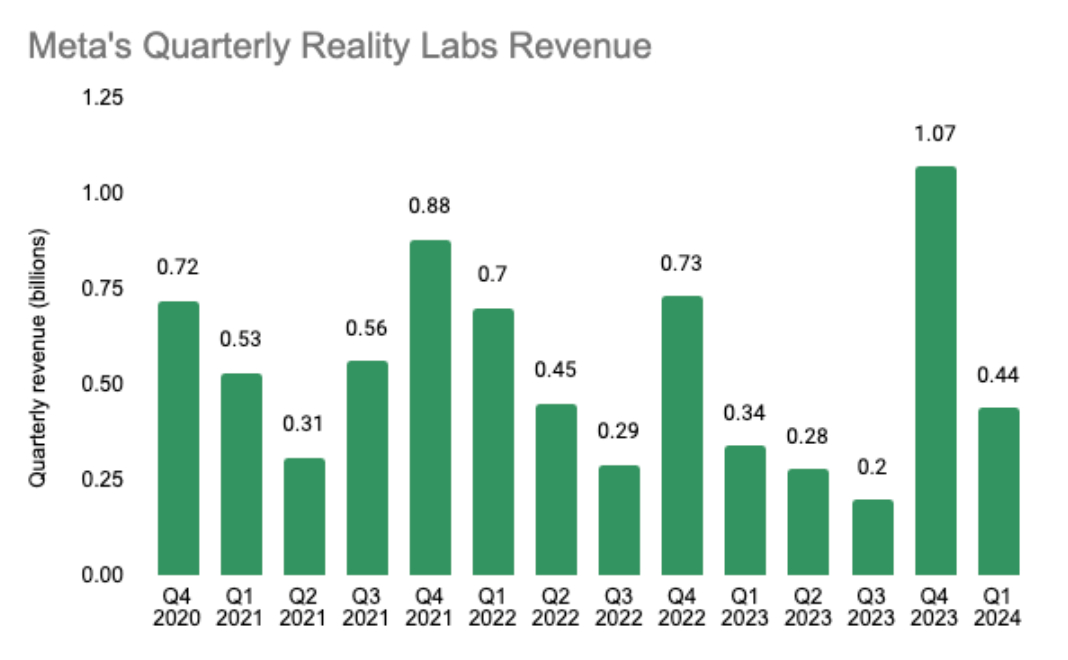 |
|

Was this newsletter forwarded to you? Sign up to get it in your inbox.
It has been 161 days since I confidently declared that Apple’s Vision Pro was the future of consumer electronics. It has been 148 days since I boldly argued that the Vision Pro did not need a killer app to succeed. It has been 89 days since I loudly proclaimed that Apple had the making of a hit on its hands.
Now, it is time for me to eat crow. I was wrong—on the timing, at least.
Last week, Bloomberg reported that the Vision Pro would sell fewer than 500,000 units in its first year of release. Assuming an average revenue per device of $4,000—$500 above the base model’s U.S. price, to account for currency fluctuations and device upgrades—and that Apple optimistically manages to move 500,000 units, its impact looks something like this if added to Apple’s 2023 revenue:
Source: Apple’s SEC filings and author’s napkin math.Relative to the $383 billion that Apple earned in the last fiscal year, a best-case scenario for the Vision Pro is like a Republican trying to vote in San Francisco—which is to say, inconsequential. And lest you think I’m casting stones on newly invented technology, when Apple released the iPhone, the company sold over 1 million iPhones within 74 days of its release.
The other reason for which I’m eating my words is that I overestimated how close we were on the science. In a recent interview with analyst Matthew Ball, Meta CTO Andrew “Boz” Bosworth said that inventing the new technology required to sell hundreds of millions of units of VR “is probably the greatest challenge that our industry has approached in certainly my lifetime and my generation.” It hasn’t exactly been a consumer hit, as the data reveals: Meta’s Reality Labs’s paltry sales total $7.5 billion since the fourth quarter of 2020, in comparison with the $134.9 billion in revenue it did in the last year alone. This includes the well-reviewed Meta Ray-Bans and VR headset Quest 3. Between this and Apple, you are looking at a virtual reality market for hobbyists—the tech simply isn’t there yet.
Source: Meta SEC filings (no napkin math required).
There are three reasons for which virtual reality devices have not managed to hit expectations—each of which indicates something not just about VR, but the future of technology.
Become a paid subscriber to Every to learn about:
- Why VR hasn't lived up to the hype (yet)The cold start problem meets the attention economyWhen screens separate us from what matters most
Click here to read the full post
Want the full text of all articles in RSS? Become a subscriber, or learn more.



